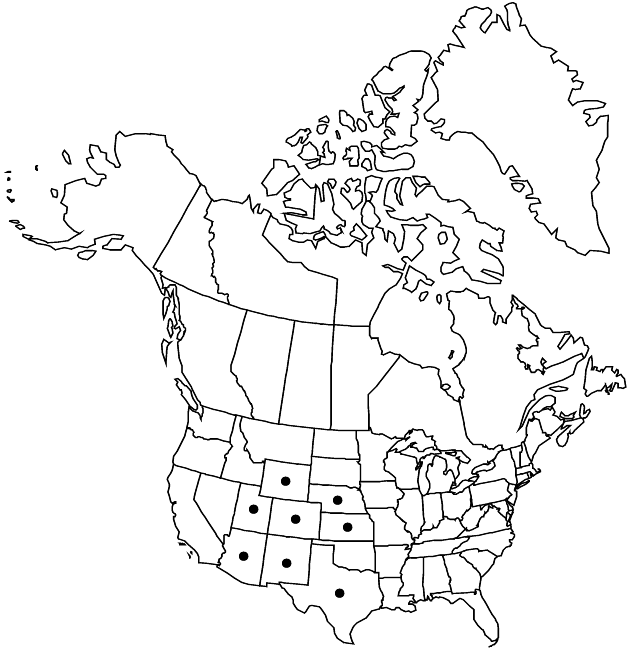Heterotheca villosa var. nana
Novon 4: 54. 1994.
Stems ascending to erect (1–60+), 9–40(–63) cm, moderately to densely hispido-strigose, abundantly long-hirsute, sparsely to densely stipitate-glandular. Distal cauline leaf blades (often perpendicluar to stems), linear to broadly oblong, (6–)10–24(–32) mm, ± reduced distally, bases rounded, margins flat, apices usually acute, often obtuse, faces moderately hispido-strigose (hairs 9–56/mm2), moderately to densely stipitate-glandular (glands 2–36/mm2). Heads 2–20(–33) in usually congested, corymbiform arrays. Peduncles (4–)10–35(–48) mm, moderately to densely hispido-strigose, moderately to densely glandular; bracts 1–4, linear-oblong, reduced distally, not leaflike. Involucres cylindric to campanulate (fresh), (5.4–)6.4–8.4(–9) mm. Phyllaries narrowly triangular-lanceolate, margins sometimes reddish purple distally, faces sparsely to moderately strigose, sparsely to densely glandular. Ray florets 11–19(–22); laminae (3.5–)6.9–11(–12) mm. 2n = 18.
Phenology: Flowering (May–)Jun–Aug(–Oct).
Habitat: Sandy and gravelly limestone, sandstone and granitic soils, fissures in lava surfaces, igneous cliffs, short-grass grasslands, dry sagebrush areas, open mixed conifer forests at lower elevations, pinyon-juniper-cholla brush
Elevation: 1300–2700(–2900) m
Distribution

Ariz., Colo., Kans., Nebr., N.Mex., Tex., Utah, Wyo.
Discussion
Variety nana is distinguished by its linear to broadly oblong, often perpendicular, distal stem leaves and often congested, corymbiform arrays. Forms of var. minor with oblong to ovate leaves generally have stems with longer internodes and fewer leaves. Plants at higher elevations in the foothills approach narrow-leaved forms of Heterotheca fulcrata in general appearance, and may hybridize with them, especially in the Laramie Hills of Wyoming. Possible hybrids between var. nana and var. foliosa occur in Colorado and Wyoming, where the two are sympatric. In the Four Corners area, var. nana grades into var. scabra, and collections often are difficult to place into one of the two taxa; both have broader leaf bases than var. minor as it occurs in the region. Rare plants in Wisconsin show similarities to both var. minor and var. nana. The variety was long known under the epithet horrida (either as a species or variety), but at the varietal rank the epithet nana is older.
Selected References
None.